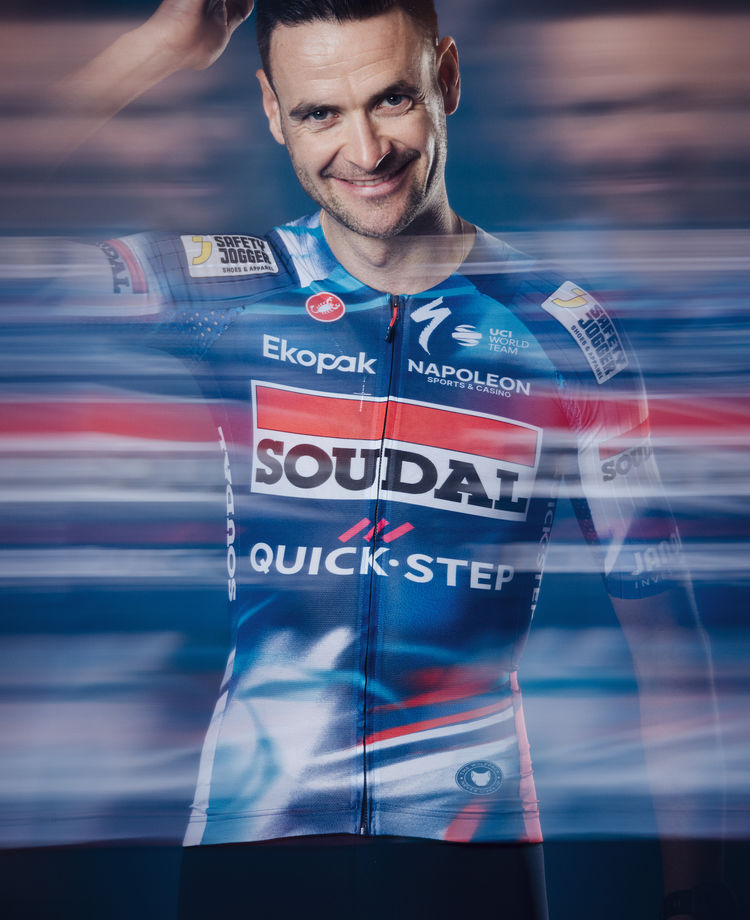After doing the recon, our riders talked on Friday about the course and their expectations for the Spring's final classic.
Liège–Bastogne–Liège, cycling's oldest Monument, is ready for another episode, its 102nd, which is due to take place on Sunday, April 24th, on a course regarded by many as one of the toughest in recent memory. First held in 1892, the 253-km long "La Doyenne" will start from Liège and will see the riders travel to Bastogne, before hitting its second section, a more nuanced and extremely difficult one, as it includes a total of ten categorized climbs. The race is expected to turn nervous on Côte de Wanne, which precedes Côte de la Haute-Levée (3.6 km-long, 5.6%), but it won't be only until the emblematic Côte de La Redoute that the real action will begin.
The 2-km long climb averages 8.9% and many riders will try to make their move there, especially as another landmark of the event – Côte de La Roche-aux-Faucons – comes not far off. Roche-aux-Faucons (1300 meters, 11% average gradient) will play host to other long range attacks and a serious trimming of the peloton, before the final 8 kilometers, where two more ascents will come in the way of the riders: Côte de Saint-Nicolas and Côte de la Rue Naniot (600 meters), a cobbled and narrow hill which has a relentless average gradient of 10.5%, just 2500 meters from the line. The finish in Ans is in a slight uphill and will give one more opportunity for those with an extra kick, who will go for a solo victory.
Etixx – Quick-Step will line up a strong and motivated team for the Spring's final Monument, the outfit being spearheaded by 2013 winner Daniel Martin and 2015 runner-up Julian Alaphilippe. Joining them will be Maxime Bouet, David De La Cruz, neo-pro Laurens De Plus, Pieter Serry, Brabantse Pijl champion Petr Vakoč and Julien Vermote.
On Friday, the riders attended the traditional pre-race press conference, where Dan Martin shared his thoughts on Liège–Bastogne–Liège, which he'll ride for the ninth time in his career: "The climbs are long and straight, and that will make up for a tough race. Usually, it's a long game of poker, and this year the wind could play a very important role. Things can explode on that new climb, but having it on the menu can also mean that the race could be much calmer before that point, because people will be scared of it. Liège–Bastogne–Liège is less predictable than Flèche Wallonne and it's very important to be flexible, because many things are happening during the race. I come here after a good Flèche Wallonne, where I felt strong, and this gives me a lot of confidence. It's great to be part of such a team, me and Julian are getting along very well and I'll be happy if one of us ends up winning the race."
Last season, Julian Alaphilippe turned heads during the Ardennes, with his strong performances and results. This year, the young Frenchman put on two other solid displays in the events he rode in the past two weeks and is now ready to bring down the curtain on his Spring Campaign with another significant result: "It was nice to go on the course on Friday and check it out. The new climb, Côte de la Rue Naniot, is difficult, with steep gradients and cobbles, and it will make things hard. Being so tough, it could lead to fewer attacks during the race, as some will try to conserve their energy. It won't be easy with this new ascent and that's why I don't think we will have a sprint at the end. We go into the event with a solid team and we will try to do everything we can. Liège–Bastogne–Liège is a race I love, I love the adrenaline it gives me and I have nice memories from last year. The forecast says bad weather, with strong winds and low temperatures, but I don't think about it, because everybody will have bad weather. I will just stay focused on the race and be ready for anything."
Photo credit: Belga-image











